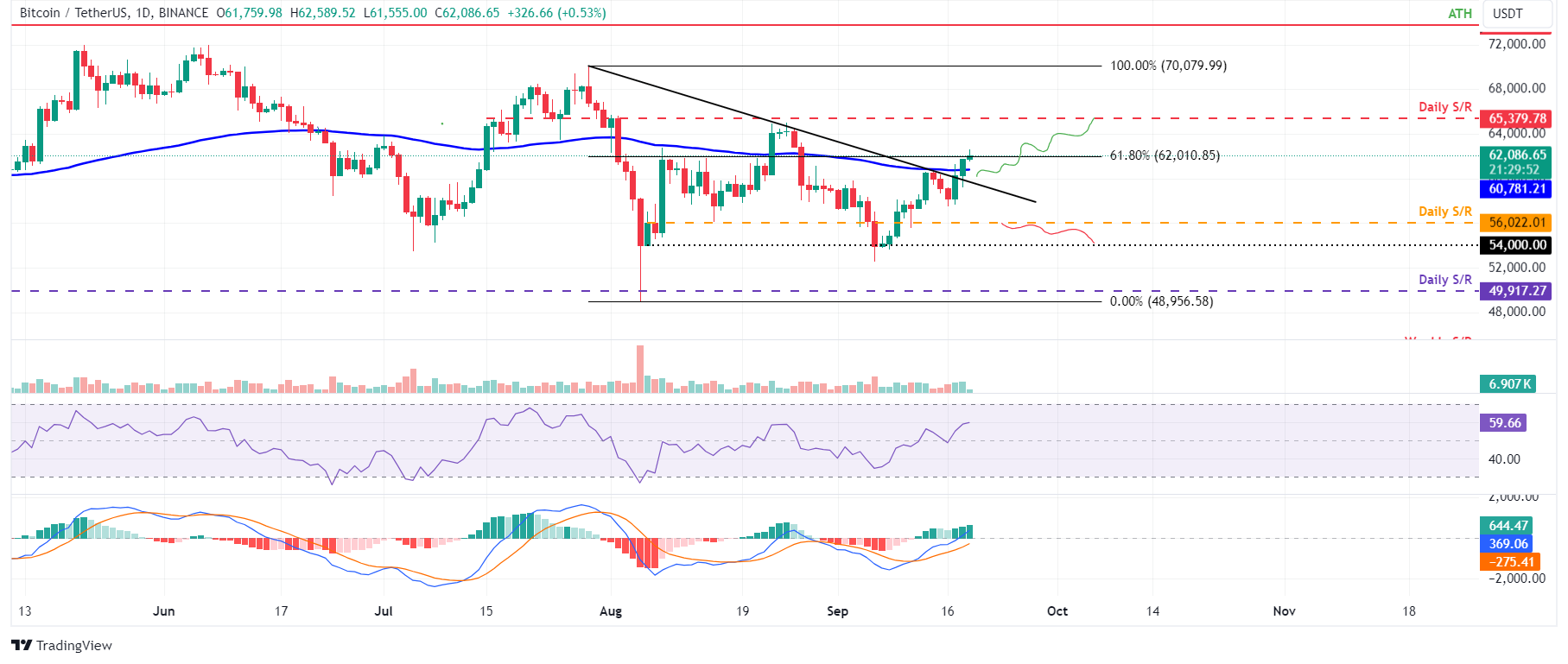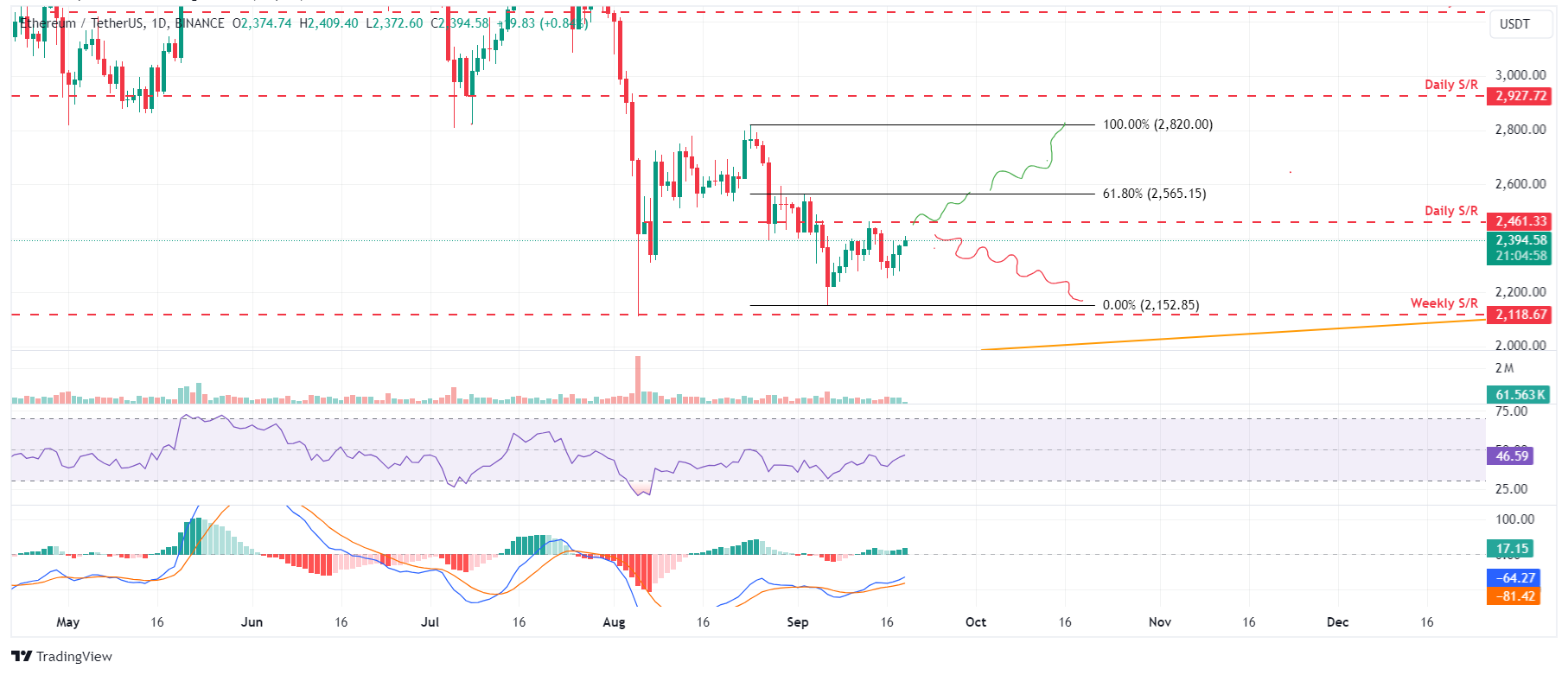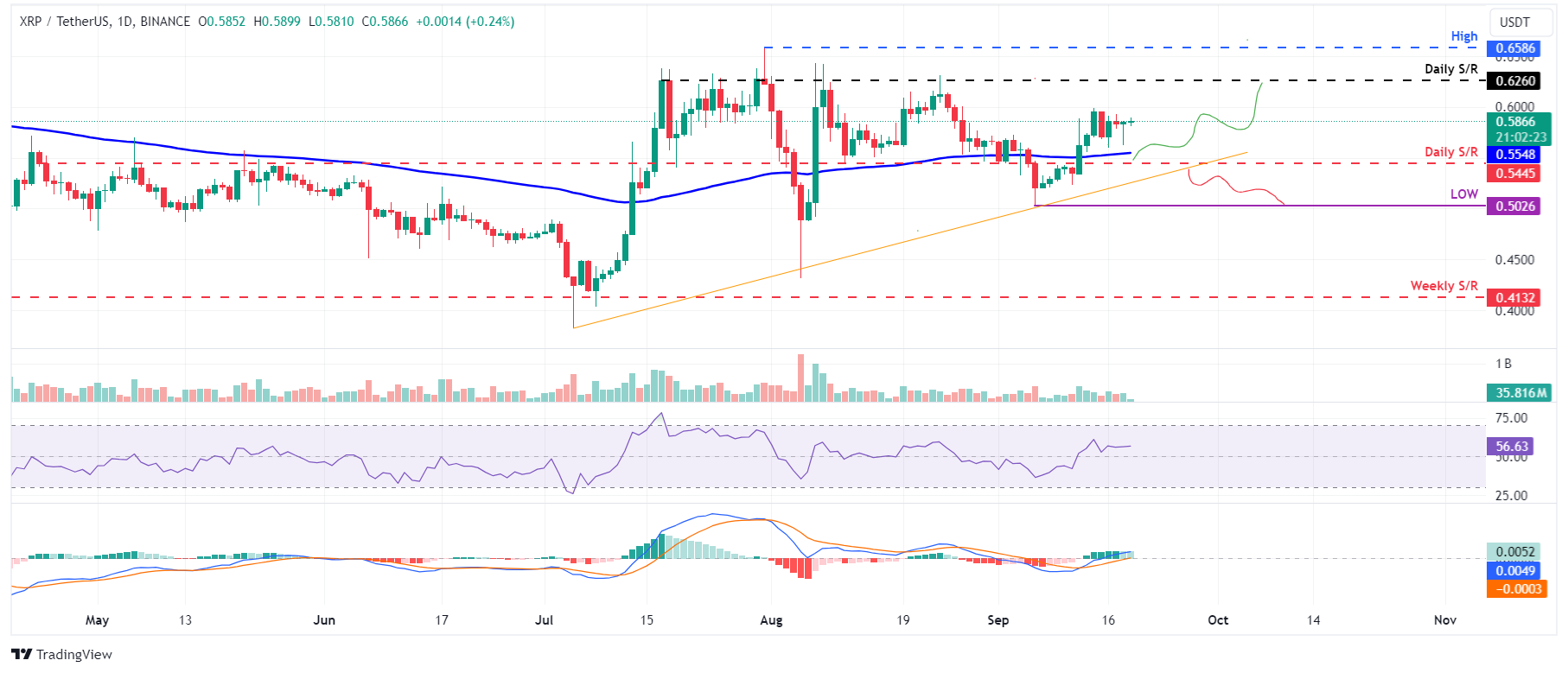- Bitcoin breaks and closes above 100-day EMA around $60,781, eyes for a rally ahead.
- Ethereum price approaches its key resistance level at $2,461; a close above would suggest a bullish move.
- Ripple price bounces off the 100-day EMA at $0.554, signaling a continuation of an upward trend.
Bitcoin (BTC) and Ripple (XRP) eye for a rally as they break and find support around their resistance barrier. Meanwhile, Ethereum (ETH) demonstrates signs of recovery as it approaches a critical resistance level, indicating that an upward rally could be on the horizon if it successfully breaks through.
Bitcoin eyes the $65,000 mark amid a close above key resistance level
Bitcoin price broke above the descending trendline (drawn from multiple high levels from the end of July) on Wednesday. It also closed above the 100-day Exponential Moving Average (EMA) at $60,781, which it failed to close above last week. At the time of writing on Thursday, it trades slightly above its 61.8% Fibonacci retracement level around $62,000.
If BTC closes above its 61.8% Fibonacci retracement level around $62,000, it could rally 5.6% to retest its daily resistance at $65,379.
The Moving Average Convergence Divergence (MACD) indicator further supports Bitcoin’s rise, signaling a bullish crossover on the daily chart. The MACD line (blue line) moved above the signal line (yellow line), giving a buy signal. It shows rising green histogram bars above the neutral line zero, also suggesting that Bitcoin’s price could experience upward momentum.
Furthermore, the Relative Strength Index (RSI) trades above its neutral level of 50, indicating bullish momentum.

BTC/USDT daily chart
However, the bullish thesis will be invalidated if BTC breaks below the descending trendline and closes below the $56,022 daily support level. It could extend the decline by 3.6% to retest its psychologically important level at $54,000.
Ethereum price shows signs of recovery
Ethereum price failed to close above the daily resistance level of $2,461 on September 13 and declined 5.88% over the next three days. However, it recovered 3.4% from Tuesday to Wednesday. On Thursday, it continues to recover, trading at $2,394 and approaching its daily resistance level of $2,461.
If ETH raises and closes above $2,461, it could extend the rise by 5% to retest its 61.8% Fibonacci retracement level at $2,565 (drawn from the August 24 swing high of $2,820 to September 6 swing low of $2,152).
The MACD indicator further supports Ethereum’s rise, signaling a bullish crossover on the daily chart. The MACD line moved above the signal line, giving a buy signal. It shows rising green histogram bars above the neutral line zero, also suggesting that Ethereum’s price could experience upward momentum.
Meanwhile, the RSI remains broadly unchanged and very close to its neutral level, indicating a lack of momentum.

ETH/USDT daily chart
On the other hand, if Ethereum fails to close above the daily resistance level of $2,461, it could decline further to retest its September 6 low of $2,152.
Ripple price action shows potential for a rally
Ripple price retested and bounced off its 100-day EMA at $0.554 on Wednesday. The 100-day EMA coincides with the daily support level at $0.544, making this level a key support zone. As of Thursday, it trades above $0.586.
If the 100-day EMA and daily support around $0.544 continue to hold, XRP could continue its upward trend and retest its daily resistance level at $0.626.
The MACD indicator further supports Ripple’s rally, signaling a bullish crossover on the daily chart. The MACD line moved above the signal line, giving a buy signal. It shows rising green histogram bars above the neutral line zero, also suggesting that Ripple’s price could experience upward momentum.
Additionally, the RSI trades above its neutral level of 50, indicating bullish momentum.

XRP/USDT daily chart
However, the bullish outlook would be invalidated if Ripple’s daily candlestick closes below the $0.544 daily support level and breaks below the ascending trendline. In such a case, XRP would decline 7.5% to retest its September 6 low of $0.502.
Bitcoin, altcoins, stablecoins FAQs
Bitcoin is the largest cryptocurrency by market capitalization, a virtual currency designed to serve as money. This form of payment cannot be controlled by any one person, group, or entity, which eliminates the need for third-party participation during financial transactions.
Altcoins are any cryptocurrency apart from Bitcoin, but some also regard Ethereum as a non-altcoin because it is from these two cryptocurrencies that forking happens. If this is true, then Litecoin is the first altcoin, forked from the Bitcoin protocol and, therefore, an “improved” version of it.
Stablecoins are cryptocurrencies designed to have a stable price, with their value backed by a reserve of the asset it represents. To achieve this, the value of any one stablecoin is pegged to a commodity or financial instrument, such as the US Dollar (USD), with its supply regulated by an algorithm or demand. The main goal of stablecoins is to provide an on/off-ramp for investors willing to trade and invest in cryptocurrencies. Stablecoins also allow investors to store value since cryptocurrencies, in general, are subject to volatility.
Bitcoin dominance is the ratio of Bitcoin’s market capitalization to the total market capitalization of all cryptocurrencies combined. It provides a clear picture of Bitcoin’s interest among investors. A high BTC dominance typically happens before and during a bull run, in which investors resort to investing in relatively stable and high market capitalization cryptocurrency like Bitcoin. A drop in BTC dominance usually means that investors are moving their capital and/or profits to altcoins in a quest for higher returns, which usually triggers an explosion of altcoin rallies.

























